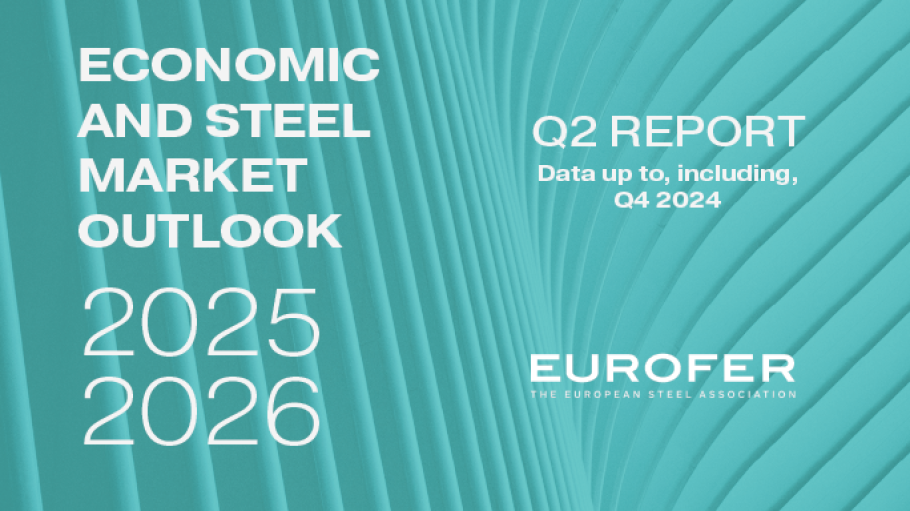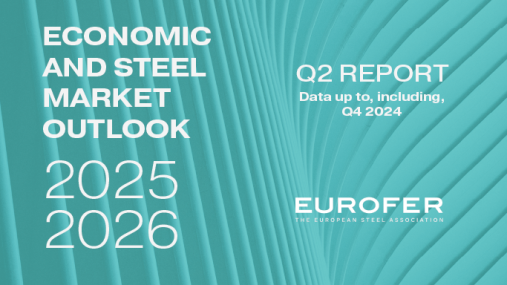
Press releases » Trump’s tariffs hit steel market hard as recession and weak demand persist into 2025
Trump’s tariffs hit steel market hard as recession and weak demand persist into 2025
Downloads and links
Recent updates

Brussels, 05 June 2025 – The high level of uncertainty and major disruptions caused by the new U.S. tariffs have dealt a severe blow to recovery expectations in the steel market for 2025. Against the backdrop of broader economic resilience driven by services, industry remains weak, weighing on steel demand and consumption. Recovery is not expected before 2026, and only if positive developments emerge in the global geoeconomic outlook. According to EUROFER’s latest Economic and Steel Market Outlook, the recession in apparent steel consumption will continue in 2025 (-0.9%) for the fourth consecutive year (-1.1% in 2024), contrary to earlier forecasts of growth (+2.2%). A similar trend is expected for steel-using sectors, with another recession in 2025 (-0.5%, after -3.7% in 2024) instead of a projected recovery (+1.6%). Steel imports remained at historically high levels (27%) throughout 2024.
“The new U.S. 50% tariffs on steel are a further blow to the European steel market outlook, which was already weak. External factors such as global overcapacity, high energy prices and geopolitical tensions, continue to affect EU producers, who can no longer bear this situation and are left with no choice but close capacity, lay off workers and halt decarbonisation projects. In light of the continuous worsening of the EU steel market outlook, we call on the European Commission to consider emergency trade actions to ensure the stability of the EU steel market, should EU-US negotiations fail and further uncertainty and economic disruptions materialise”, said Axel Eggert, Director General of the European Steel Association (EUROFER), following the publication of the Economic and Steel Market Outlook Q2 2025.
In 2024, apparent steel consumption saw growth only in the fourth quarter (+0.5%), reaching 30.1 million tonnes. The overall evolution of steel demand remains subject to very high uncertainty, with no improvement expected before the first quarter of 2026. Consumption volumes are expected to remain far below pre-pandemic levels.
Domestic deliveries followed a similar pattern and contracted again (-2%) in the fourth quarter, recording another overall annual decrease in 2024 (-2.8%). During the same period, imports continued to rise significantly (+6.3%), with an overall annual market share out of steel demand for 2024 standing again at a historical high of 27%.
EU steel-using sectors
The performance of steel-using sectors remained negative throughout 2024, with another drop (-4.9%) in the fourth quarter. Due to an overall gloomier industrial outlook, all steel-using sectors underperformed, particularly automotive (-2.6%) and construction (flat), contributing to a deeper-than-projected recession in the whole year 2024 (-3.7% vs. -3.3%). U.S. tariffs and associated uncertainty are now expected to impact the Steel Weighted Industrial Production index (SWIP) in 2025, with another projected recession (-0.5%), versus previous expectations of growth (+0.9%). A modest rebound (+1.3%) is expected in 2026.
Contact
Lucia Sali, Spokesperson and Head of Communications, +32 2 738 79 35, (l.sali@eurofer.eu)
About the European Steel Association (EUROFER)
EUROFER AISBL is located in Brussels and was founded in 1976. It represents the entirety of steel production in the European Union. EUROFER members are steel companies and national steel federations throughout the EU. The major steel companies and national steel federation of Turkey, Ukraine and the United Kingdom are associate members.
The European Steel Association is recorded in the EU transparency register: 93038071152-83.
About the European steel industry
The European steel industry is a world leader in innovation and environmental sustainability. It has a turnover of around €215 billion and directly employs around 298,000 highly-skilled people, producing on average 146 million tonnes of steel per year. More than 500 steel production sites across 22 EU Member States provide direct and indirect employment to millions more European citizens. Closely integrated with Europe’s manufacturing and construction industries, steel is the backbone for development, growth and employment in Europe.
Steel is the most versatile industrial material in the world. The thousands of different grades and types of steel developed by the industry make the modern world possible. Steel is 100% recyclable and therefore is a fundamental part of the circular economy. As a basic engineering material, steel is also an essential factor in the development and deployment of innovative, CO2-mitigating technologies, improving resource efficiency and fostering sustainable development in Europe.

Download files or visit links related to this content
A milestone occasion to quickly and effectively restore affordable electricity, to relaunch the
decarbonization and strengthen the international competitiveness of the European steel
industry.
Brussels, 02 December 2025 – Unchanged negative conditions – U.S. tariffs and trade disruptions, economic and geopolitical tensions, protracted weak demand and still high energy prices – continue to weigh on the European steel market. EUROFER’s latest Economic and Steel Market Outlook confirms for 2025 another recession in both apparent steel consumption (-0.2%, unchanged) and steel-using sectors (-0.5%, revised from -0.7%). A potential recovery is expected only in 2026 for the Steel Weighted Industrial Production index (SWIP) (+1.8%, stable) and for apparent steel consumption (+3%, slightly revised from +3.1%) – although consumption volumes would still remain well below pre-pandemic levels. Steel imports retained historically high shares (27%), while exports plummeted (-9%) in the first eight months of 2025.
Fourth quarter 2025 report. Data up to, and including, second quarter 2025